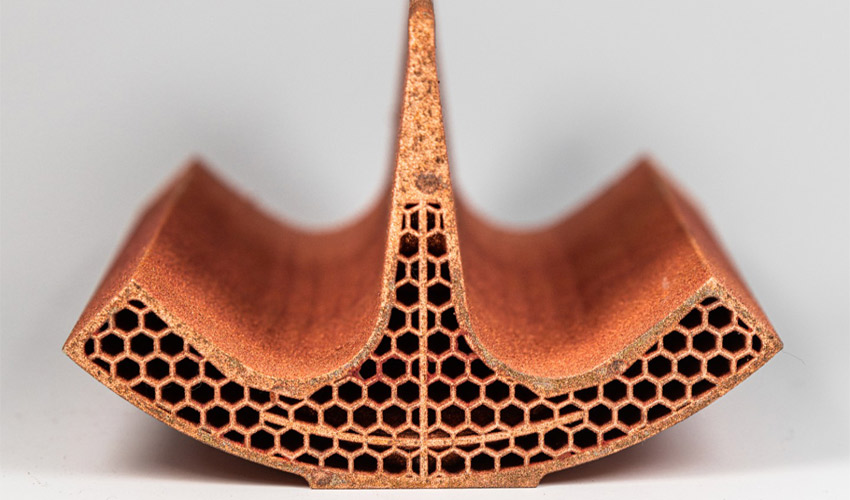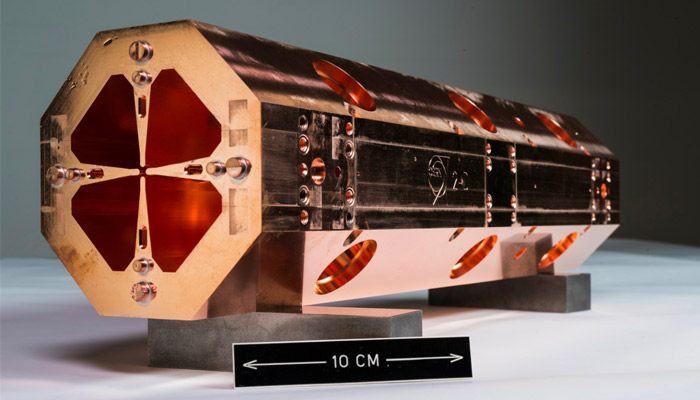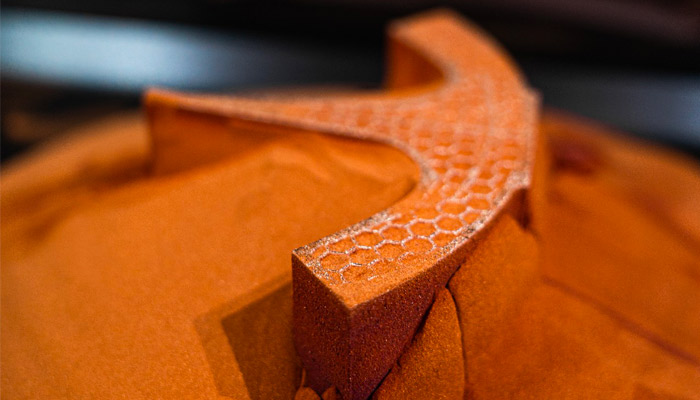A 3D Printed Copper Radio Frequency Quadrupole (RFQ) Component for the Large Hadron Collider

CERN, or the European Organization for Nuclear Research, currently houses the world’s largest particle accelerator. Called the Large Hadron Collider (LHC), its objective is to transmit energy to particles through electric or magnetic fields. Today, we bring your attention to the LHC because it could include for the first time a 3D printed copper radio frequency quadrupole. Specifically, this is a radio frequency quadrupole linear accelerator (RFQ), one of the most difficult parts to design and assemble. For these reasons, Fraunhofer IWS, in collaboration with CERN, the Technical University of Riga and the Polytechnic University of Milan, chose additive manufacturing, or more specifically laser powder bed fusion, to produce it.
The partners all part of the I.FAST (Innovation Fostering in Accelerator Science and Technology) Horizon 2020 project, which is funded by the European Union and aims to develop new particle accelerator designs. With 49 partners, it hopes to accelerate innovation in a subject that can be quite challenging. It is in this context that metal additive manufacturing has been used, a new concrete example of the technology’s potential.

The classic model of a complete quadrupole (photo credits: CERN)
Additive manufacturing for overcoming assembly problems
According to the project partners, the RFQ is traditionally manufactured from highly conductive materials and alloys, via multi-axis milling of “prefabricated large-scale-forged single-piece components”. In concrete terms, the RFQ integrates 4 modules that are assembled by furnace brazing. However, the latter generally releases residual stresses, which can lead to geometric distortion. Several heat treatments during machining are then necessary to maintain the quality level and ensure the proper functioning of the part. As you can imagine, all these steps are time-consuming, costly and not very efficient. To overcome this, the project partners turned to additive manufacturing, particularly because of its ability to produce components in a single block, thus avoiding the assembly steps and their constraints.
They explained, “Eventually, complete segments including all four “vanes” of the RFQ system could be built in one piece, thus avoiding brazing, and allowing for the optimal manufacturing of complex elements as internal cooling channels and external ports. Advances in AM equipment, design ability (including simulation tools) and the manufacturing methodology itself are opening entirely new avenues for the RFQ design optimisation and full-scale production, even using pure-copper, which is considered as a challenging material for laser-based AM processes.” This is because copper is a metal that will reflect the laser light, so it will also reflect some of the energy needed to manufacture the part.
An optimized radio frequency quadrupole prototype
The partners chose laser powder bed fusion, more specifically on a TruPrint1000 machine, to meet all the production constraints, particularly in terms of geometric precision, surface roughness and electrical conductivity. They reproduced one quarter of the radio frequency quadrupole currently used by CERN. The 3D-printed prototype is 95 mm long and features the tip of the vane, internal surfaces, improved cooling channels and a redesigned internal structure. A honeycomb pattern was chosen in the design phase, which reduced the volume of material needed by 37% and the total weight by 21%. It took 16.5 hours of printing to produce the prototype, which has a layer thickness of 30 microns and a height of 98.01 mm.

The partners opted for laser powder bed fusion (photo credits: Christoph Wilsnack/Fraunhofer IWS)
The teams concluded, “AM technology is particularly well suited for the required mechanical complexity of RFQ and offers significant design and optimisation freedom to meet the stringent manufacturing requirements that cannot be achieved by conventional technologies. This also opens a way to major RFQ improvements and eventually a full-size production, even using pure-copper, which is a technologically demanding material.” So 3D printing could have a significant impact in the manufacture of tomorrow’s particle accelerators! Find out more about the team’s work HERE.
*Cover Photo Credits: Christoph Wilsnack/Fraunhofer IWS
What do you think of this 3D printed copper Radio Frequency Quadrupole (RFQ)? Let us know in a comment below or on our Linkedin, Facebook, and Twitter pages! Don’t forget to sign up for our free weekly Newsletter here, the latest 3D printing news straight to your inbox! You can also find all our videos on our YouTube channel.







